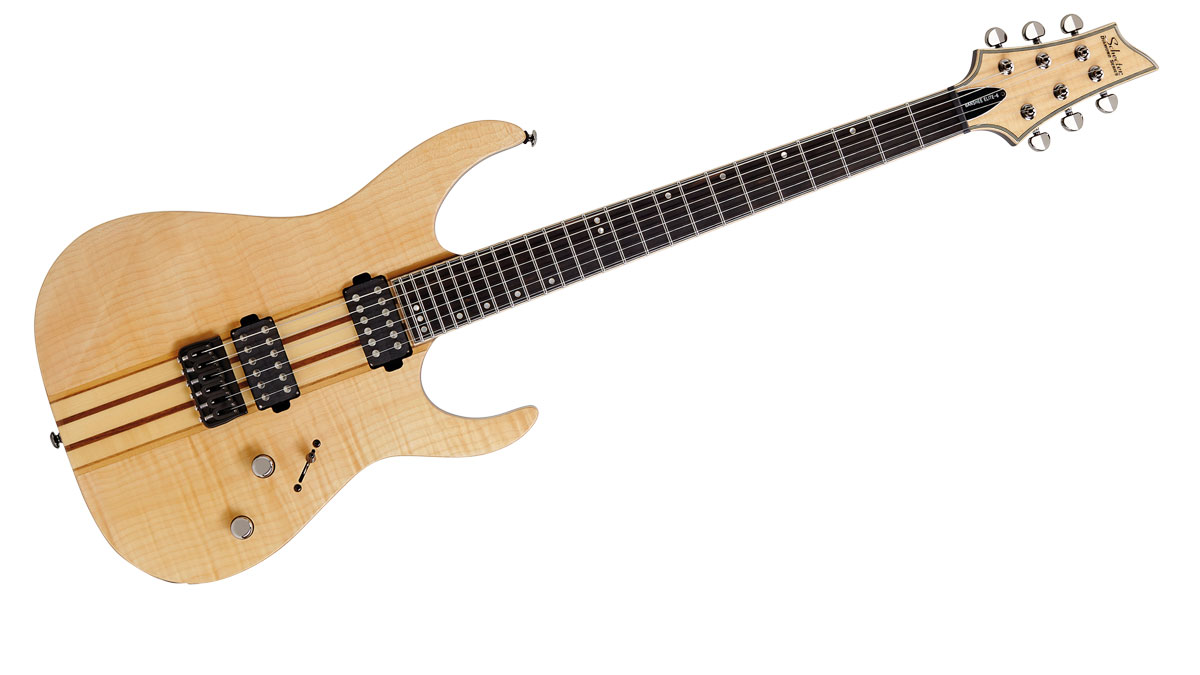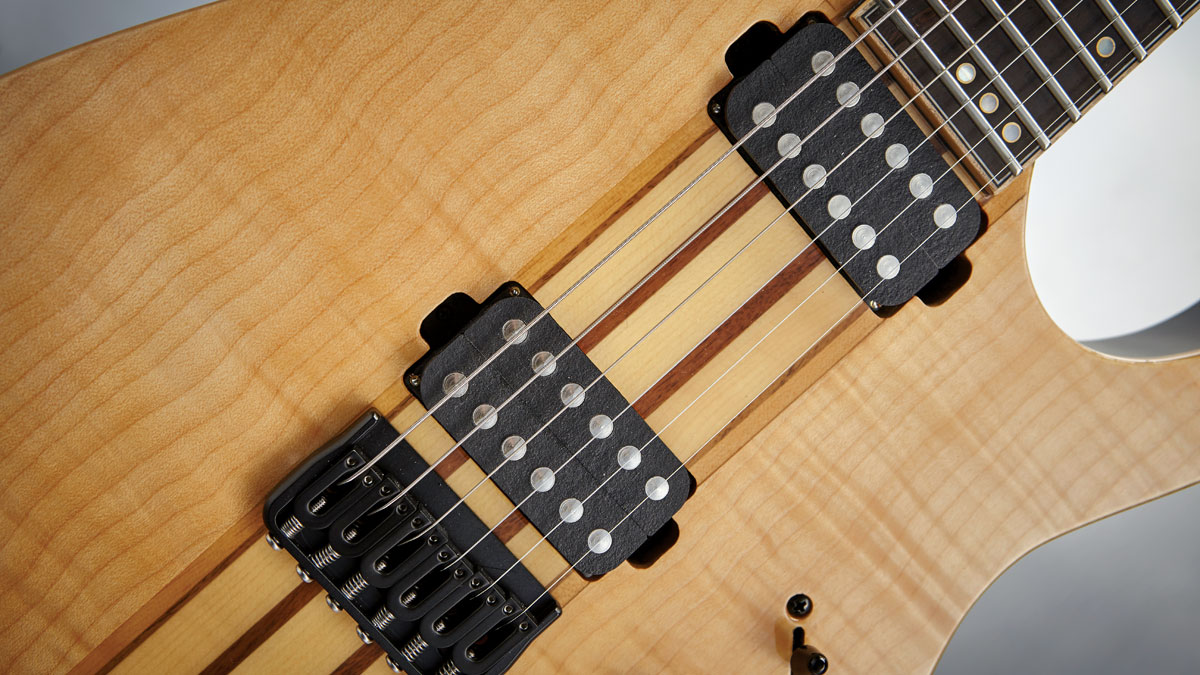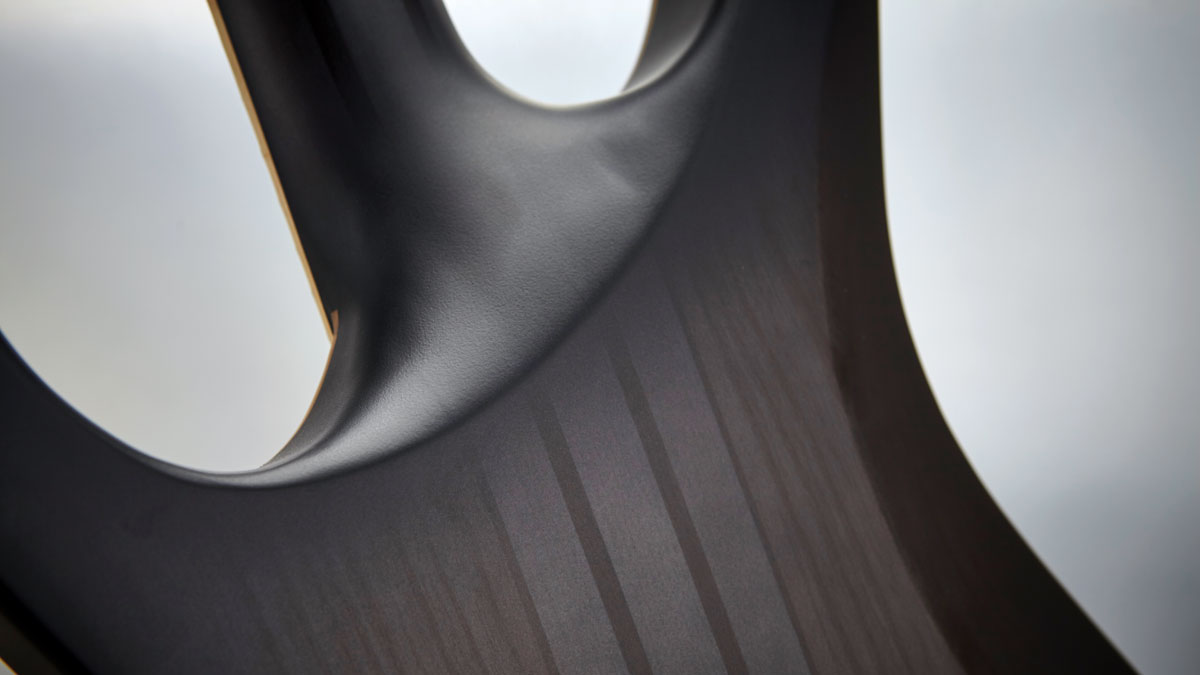MusicRadar Verdict
One of the best-sounding rock guitars we've played.
Pros
- +
Effortless playability. Stunning pickups. Good value.
Cons
- -
There are more versatile guitars.
MusicRadar's got your back

Schecter Banshee Elite-6

Pickups

Heel
Although Schecter has been in business for over 30 years, producing models diverse enough as to attract the likes of Pete Townshend and Mark Knopfler, today, it's synonymous with rock and metal.
In recent years, the gauntlet has been very much thrown down by the more technical exponents of these genres and Schecter, along with a select few other companies, offers the discerning djentleman a wide variety of high-powered rock guitars in six-, seven-, eight- and even (gulp!) nine-string versions.
Despite only having been introduced in 2013, the Banshee series has begun to establish itself as a port-of-call for the rocker on a budget, with all the hallmarks of a shredder's workhorse, including an ebony fingerboard, compound radius, hot Seymour Duncan pickups and a wide range of other shred-inspired options.
"If your domain is the squealy end of the fretboard, then this may be your perfect guitar"
We reviewed the Banshee 6 shortly after its introduction and deemed it to be one of the finest rock/metal double-cuts we've played, so it was hard to see how Schecter's bods could improve upon the design. Well, in the form of 2015's new Banshee Elite range, they have. And then some.
The turbo-charged rock fundamentals of the Banshee are all intact, but the Elite range has some fairly significant differences. Firstly, it's goodbye to the alder body and hello to slightly brighter-sounding swamp ash, while there's a flamed maple finish as opposed to the quilt on its Banshee 6 forefather.
The bolt-on construction is no more, either, eschewed in favour of a nine-piece maple/walnut neckthrough arrangement adorned with, wait for it, glow-in-the-dark side-fretboard markers! So no more excuses for messing up those three-octave sweep arpeggios on a dark stage.
The Elite's new brass-surrounded offset inlays look particularly cool in conjunction with the maple neck binding, and the natural finish (currently the only finish offered on the Elite-6) is perfectly pleasant, though doesn't exactly exude a metal vibe.
This new through-neck construction has been designed to feature a heel that is so low profile, and so smooth and rounded, that it's basically non-existent. If your domain is the squealy end of the fretboard, then already this may be your perfect guitar, as seldom have we played so high up the fretboard without the obligatory odd hand shapes forced upon you by a cumbersome neck heel.
Unplugged, you can hear the strings chime against the tall and beautifully crowned stainless-steel frets, and the thin but comfortable 'C' neck shape lends itself perfectly to shredding and legato licks.
"The USA Custom Shop-designed pickups here are anything but low-budget"
Perhaps the most notable change on the Elite series models is the use of Schecter pickups over the big-brand Seymour Duncans usually found on the Banshee series.
It's often the case that guitar manufacturers' branded pickups represent a cost-cutting exercise, and are therefore often found on budget guitars in the range, but the USA Custom Shop-designed pickups here are anything but low-budget. Their distinctive huge pole pieces and macho SuperCharger Mach moniker promise a powerful rock sound, and boy, do they deliver!
Billed as having a "distinct blend of power and definition" on a dirty setting, they provide such a powerful and fluid sound for solo work that you feel you hardly need to apply any pressure to the strings.
Legato and tapping lines sound especially rich and clean, without that sometimes unwelcome saturation you often get from super-high-output pickups - these high-power Schecters are matched with equally high definition.
On a clean setting, the sounds achieved were more than satisfactory, but even with the onboard coil-splits (accessed via Schecter's five-way MegaSwitch pickup selector), it's fair to say that there are more versatile guitars out there, but not many that provide such a powerful and dynamically rich rock sound through a cranked amp.
As its name implies, the Elite range is slightly more expensive than its parent series, but the new features certainly justify the extra cost. It has a lot of competition at this price point, and when pitted against perhaps its biggest rival, Ibanez, the Elite range may lack the kudos of the Japanese-built RG prestige range, but its effortless playability and stunning pickups quite simply made this one of the best-sounding rock guitars we've played.
“A synthesizer that is both easy to use and fun to play whilst maintaining a decent degree of programming depth and flexibility”: PWM Mantis review
“I feel like that song had everything we needed to come back with”: Bring Me The Horizon’s Lee Malia on Shadow Moses, its riff and the secrets behind its tone, and why it was the right anthem at the right time
“I said, ‘Are we sure we can write a song about death?’”: The story of Mike + The Mechanics' classic No.1 The Living Years









